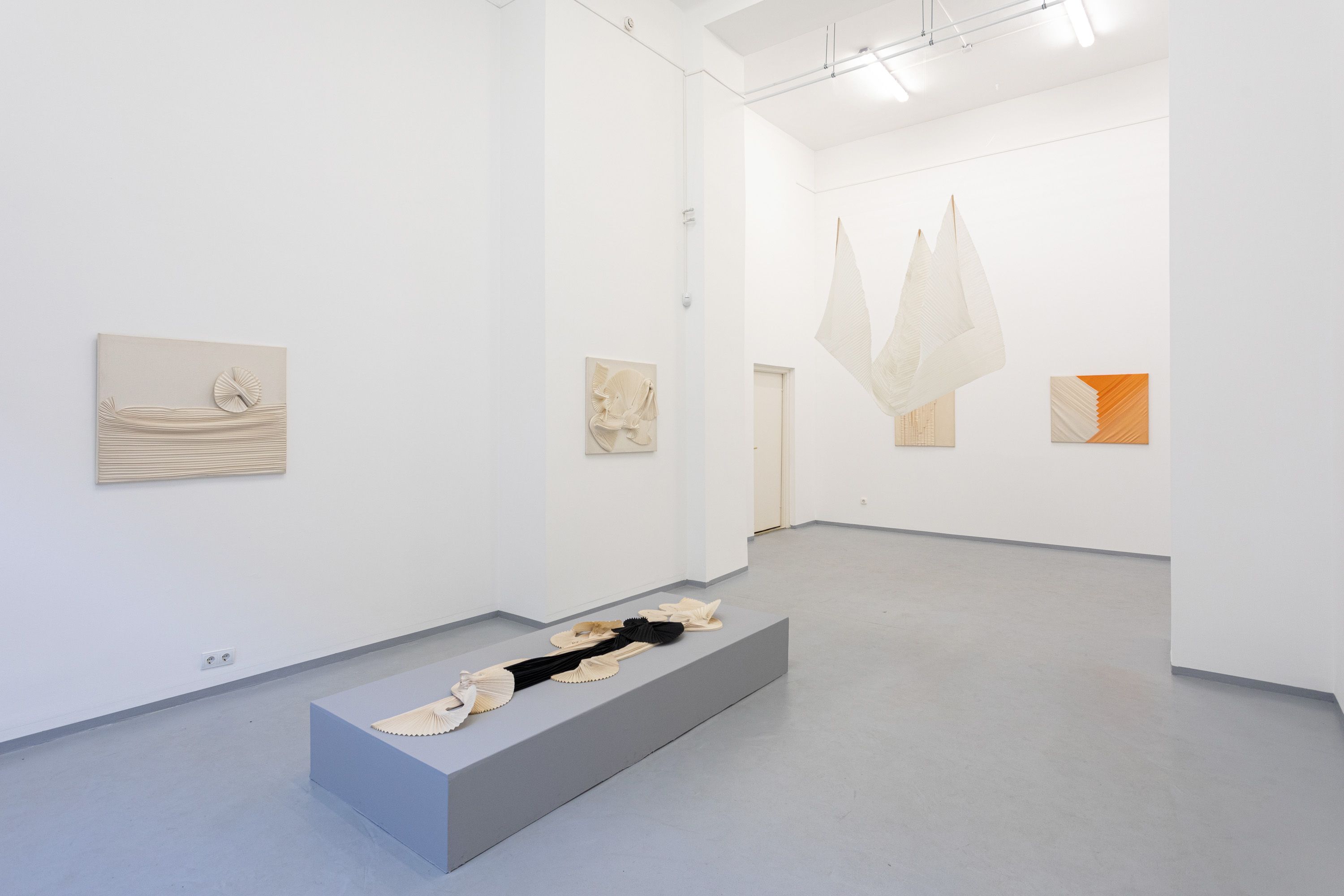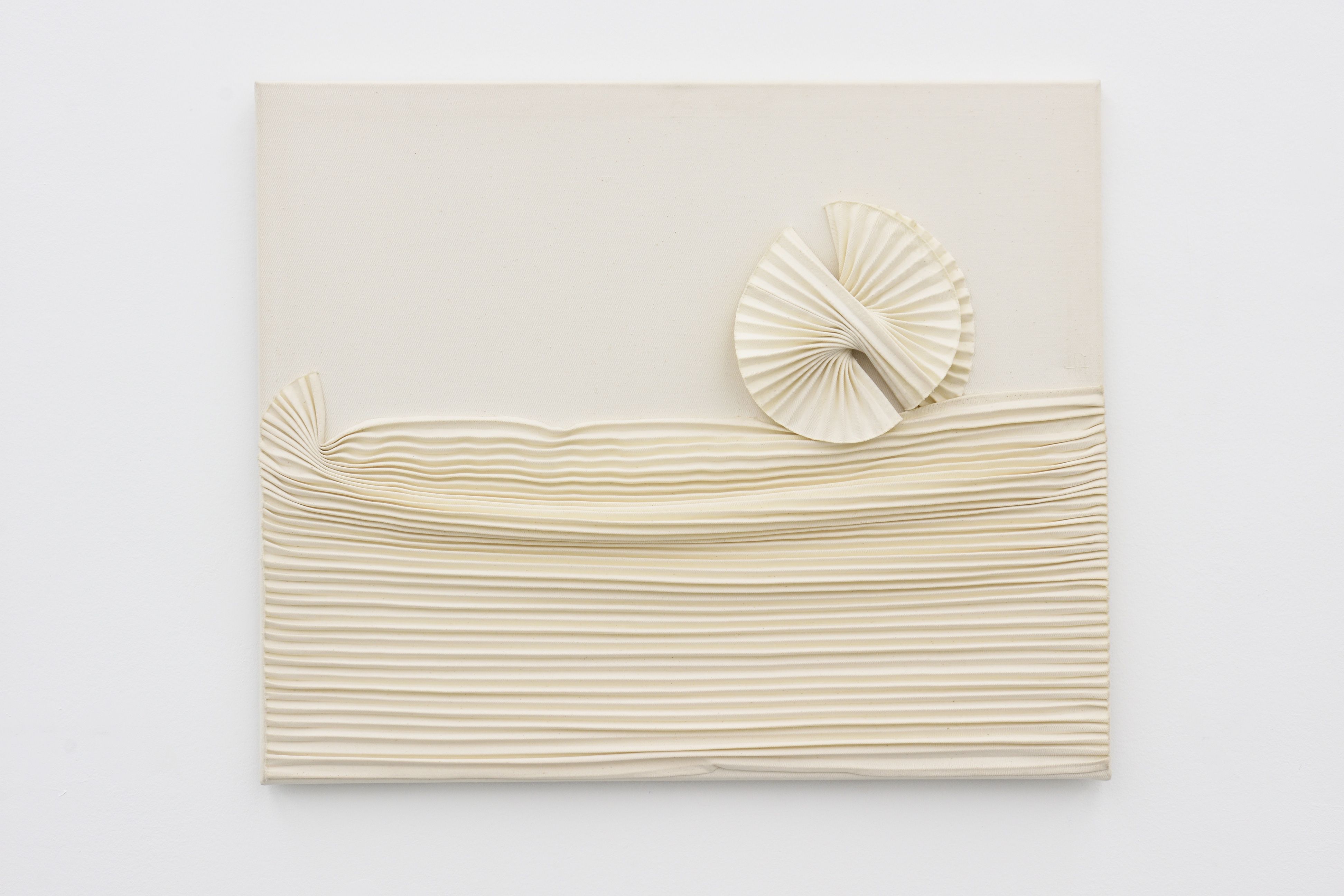Aranka Hübner
Soft Geometry
| Venue: | acb NA |
| Date: | Sep 20 – Oct 24, 2019 |
Description
Aranka Hübner (1931 – 2019), with her experimental silk compositions, is a prominent member of the great generation of Hungarian neo-avantgarde textile artists. In her work with silk and the technical possibilities it offers, Hübner sought to explore three-dimensional space, thus joining the ranks of an increasingly distinct international tendency of post-war abstraction, which gave textiles a central role.
From Hübner’s early monotypes to her three-dimensional works, she created her increasingly geometric, abstract visual language, inspired by organic motifs from nature, primarily by using silk. From the two-dimensional, homogeneous facture of silk prints, hung on the wall, she arrived at plastic silk compositions, which employed a myriad of variational possibilities.
The experimental outlook of the international textile artists who appeared on the scene in the mid-fifties led to a formal and conceptual renewal of the genre. While, in the West, textile art had vie for a foothold among the primarily painting-dominated abstract tendencies of that time, on this side of the Iron Curtain, thanks to the back-to-front art policies of socialist countries, textile happened to be one of the few forms of abstract artistic expression that were supported by the state.
In addition to Aranka Hübner, the first generation of Hungarian textile artists, who started out in the sixties, also included Gábor Attalai, Klára Kuchta, Zsuzsa Szenes and Margit Szilvitzky, among others. These artists, who worked primarily with textile and regarded it as an autonomous medium, in parallel to a distancing from the applied arts, also thematised the then-current topics problematised in international fine arts-related discourse. In addition to the novelty factor, the reason textile art could gain enough momentum to grow into a movement during the seventies on the periphery of political attention was that – outside the traditional categories of high art – the Wall and Space Textiles Biennial, from the get-go, ensured an institutional framework for the new, experimental genre of three-dimensional textile art.
The career of Aranka Hübner, a graduate of the Printed Textile Program of the Academy of Applied Arts, coincides with the unfolding of Hungarian fibre art and the decline of its heyday, between 1968 and 1980. Her significant activity in the fine arts has been rediscovered as a result of recent reinterpretations of the Hungarian context of experimental textiles – a genre which has garnered considerable international attention in recent years.
The phases of spatial expansion are easily traceable in Hübner’s oeuvre: the colour silk sprints decorated with organic patterns gave way in the mid-seventies to monochrome textile reliefs. The fossils, circles and spirals, which rigidify the dynamic of constantly evolving natural elements into a state of stillness, appear as reliefs applied onto the surface of the white silk or cotton canvas that is stretched over the frame. Finally, leaving the restrictions posed by pleated textile and panel paintings completely behind, she took full advantage of the possibilities offered by the material and the technique as she stepped out into three-dimensional space. In her suspended compositions, as well as in her sequential works constructed from multiple elements, variety was a central consideration. Phases of Relation (1978), which concluded the most significant portion of her oeuvre, can be regarded as a summarising work, where the rearrangement of the silk elements leads to an infinite number of new relations.
Aranka Hübner’s exhibition is a continuation of a new, long-term research project by the acb Gallery and acb ResearchLab, which focuses on the oeuvres of Hungarian neo-avantgarde artists whose work was not adequately recognised within the profession and appreciated in their time. In recent years, acb has extended its research to artists who worked with textile as their primary medium. In addition to exhibiting art by Klára Kuchta and Aranka Hübner in 2019, the oeuvre of Margit Szilvitzky (among others) has also become a focal point of examination for the acb ResearchLab.
The exhibition was supported by NKA.

